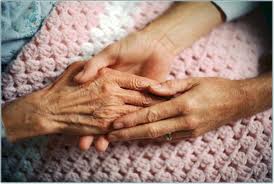Biggest Medical Device Trends of the Next 10 Years – Part Three
This last article wraps up our discussion of medical device trends.
In part one of this article, we talked about obesity and heart disease…two growing trends in America that will require new and innovative medical devices. You can read this article here.
In part two of this article, you learned about the growing threat of diabetes and how antibiotics can’t keeping up with the evolution of bacteria…and what opportunities these two trends present to inventors. More on that here – link.
Today, we will look at one of the scariest and multi-faceted diseases today and the how to ease the blight of our aging population.
Medical Device Patents and Cancer
Cancer is responsible for roughly 562,875 deaths per year, making it the second leading cause of death in the U.S.
What’s worse, the World Health Organization (WHO) predicts cancer rates could increase 50% by 2020. The reasons? Too much smoking, poor diets and infection.

Top 10 Cancers According to the CDC
The WHO suggests three ways to curb cancer related deaths.
"Action now can prevent one third of cancers, cure another third, and provide good, palliative care to the remaining third who need it, "said Dr. Paul Kleihues, Director of the International Agency for Research on Cancer (IARC) and co-editor of the World Cancer Report."
For inventors of medical devices, the third piece of advice "good, palliative care" could be a goldmine.
Obviously, there could be advances in chemotherapy. And any other sort of drug that treats cancer would be welcomed with open arms. There are varied forms of radiation therapy used. And cryosurgery…or using extreme cold to treat tumors sounds like an area ripe for improvements.
But those are after the fact.
There are opportunities for inventors to improve early detection methods. Specifically screenings. For example, advances in screenings for cervical and breast cancers have increased the odds for prevention and successful cure.
And the list goes on.
Medical Device Patents and Elder Care
Since 1960 the average American lifespan has increased by 8.6 years (to 78.4 years up from 69.8). With this growing elder population comes a greater tax on the nation’s nursing homes or at home care options.
The latest census data (from 2007) shows 7.4% of Americans aged 75 and older lived in nursing homes in 2006, compared with 8.1% in 2000 and 10.2% in 1990. While the data are trending down, I’d bet that the global economic meltdown in 2008 has dramatically reversed this trend.
 To make matter worse, most people who enter nursing homes can’t even afford to be there. According to a 2007 USA Today article:
To make matter worse, most people who enter nursing homes can’t even afford to be there. According to a 2007 USA Today article:
"The average nursing home patient runs out of money within six months and must go on Medicaid, Markwood says. That, she adds, "will not only bankrupt individuals but also the Medicaid system."
All these statistics add up to a sobering reality. The number of people in nursing homes is only going to grow and it will cost more money to keep them there.
So, where are the opportunities for inventors? I see two areas.
First, new patents for medical devices for people who opt for in-home care. At the core of these inventions will have to be making life easier for the caregivers. Think walk in tubs instead of tubs you have to step over. Or handrails for bathroom facilities.
Second, new patents for medical devices for nursing homes. These will have to focus on reducing operating costs for the homes. Maybe less expensive lift devices.
These medical trends are not going anywhere and could be an on-going goldmine for any smart inventor.
https://www.medicaldevicepatentattorneys.com/2011/01/biggest-medical-device-trends-of-the-next-10-years-part-three/trackback/
